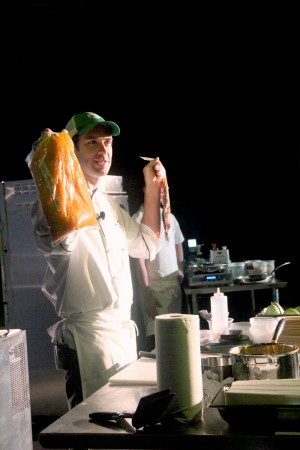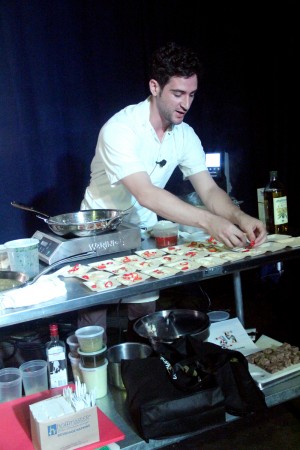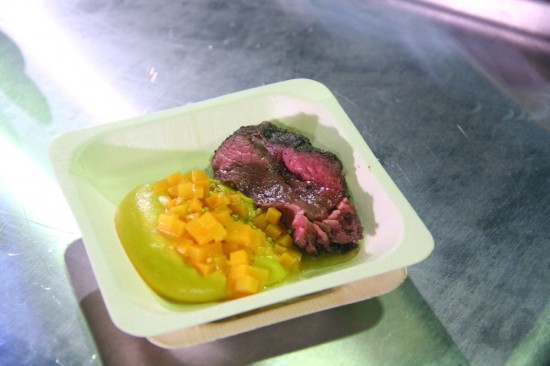As a chef, there are few annual events that are more exciting or anticipated than the Star Chefs International Chefs Congress. This year, I was surprised and honored to be asked to lead an interactive sous vide workshop at this global conference.
After studying this modernist technique with European masters in Venice, I have been teaching sous vide classes at ICE for a few years and have shared my sous vide creations on this blog. Yet to have the honor to be counted among the ranks of the “Star Chefs Presenters” was both thrilling and terrifying.

Thankfully, I had the opportunity to work with my good friend and brilliant chef Anthony Sasso, who also happens to be an ICE alum. If you don’t know Anthony, he is the Chef de Cuisine at Casa Mono, where he crafts inspired food that pulls from the traditions of Spanish cuisine. But when it comes to sous vide, Anthony is admittedly—and proudly—an old-school chef. There is no modernist equipment of any sort in the kitchen at Casa Mono.
So what does Anthony's classic style have to do with sous vide? When talking through concepts for the workshop, we realized that we cooked our favorite dishes the same way. We both coaxed exciting flavors and textures out of our food with a slow, gentle cooking process—the only difference was that Anthony’s food was sealed beneath a layer of fine Spanish olive oil, while mine was sealed in a heat-proof plastic bag.
Together, Anthony and I decided to tell the story sous vide and how it evolved over time. Low-temperature cooking—the essence sous vide—is the key to many of the greatest dishes throughout the history of cuisine. From a classic duck confit to barbeque, to modernist short ribs that cook over a matter of days, slow and low is the key.

The workshop kicked off with a mix of old and new. Anthony prepared cod cheeks pil pil, a classic dish of the Basque country in which tender nuggets of cod are gently cooked in olive oil and fish stock with chilis and garlic. The result is tender, sweet and spicy. I prepared a cylinder of roasted garlic to be served with it, first pureeing roast garlic with paprika and sherry vinegar. To that mix I added gellan, a hydrocolloid that, once gelled through heating, will not melt (chef-nerds call it thermoirreversible). We poured the mixture into tubes, placed them inside a water bath and cooked until set. Once cooled, the mixture could be unmolded and reheated while still holding the perfect cylinder shape. (It's a concept that serves many purposes, as in this dessert I created for Dessert Professional Magazine.)
Next, we discussed how a classic preparation can be revolutionized through the use of sous vide. Anthony prepared crispy goat confit, simmering partially cured goat meat on the bone in giant, olive oil filled pans in carefully tended oven. I countered this technique with the option of the duck confit we make at ICE, which requires that one cup of duck fat be sealed in a bag with the duck legs, left to cook in a circulating bath overnight.

Finally, we shared one the dishes from ICE’s new plating curriculum for career students. To begin, venison rack is cooked sous vide to a perfect medium rare, then finished on the grill. This is accompanied by a fine dice of butternut squash, pickled by vacuum sealing with spices, vinegar, and sugar. We also flash marinated maitake mushrooms with soy, ginger, and garlic, before being finishing them on the grill. The final element was crisp pears, infused in gin syrup, a nod to the classic pairing of venison and juniper.
We took care with each recipe to evoke sensible, modern uses for sous vide, creating a dialogue about the technique and the ways in which it can be put to best use. Countering this in-depth look at sous vide with classic, rustic cooking was an important reminder that, while technology is certainly a powerful tool, it's not the only route to a beautiful dish. The point we all need to remember is this: food is better when slow down, whether you’re cooking or eating.



